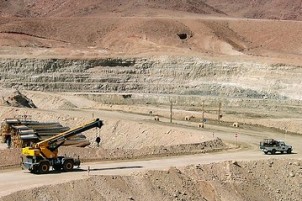
By Bertchen Kochs.
The Langer Heinrich Uranium mine (LHU) in the Namib Desert was 100% owned by the Australian company Paladin Energy Ltd. Like other uranium mining companies, Paladin is in financial difficulties since the nuclear accident in Fukushima in 2011 after which several countries decided to phase out production of nuclear power and or withdrew plans to build new nuclear plants. As a result the uranium price dropped from about US$75/lb to US$35 and stagnates at this level. At such low price the companies can only operate with great losses.
In 2013, the Managing Director of Paladin, John Borshoff, announced that the Langer Heinrich project is on the market to sell off a minority stake, if the offered price was right. “We know what options we have on Langer Heinrich. It is a top performer with a long mine life, and needs to be considered for its strategic value,” he said (Mining Weekly, 2013). In January 2014, LHU sold 25% to China Nuclear National Corporation (CNNC) for the amount of US$190 million. CNNC was established in 1988 by a Government of China decree, however it is a self-supporting economic corporation overseeing all aspects of China’s civilian and military nuclear programs. CNNC is most interested to deliver uranium oxide – commonly called yellow cake – to China who became an important entrepreneur on the international uranium market.
LHU commenced production of uranium in 2007 and is expected to have a lifespan until 2023. The mine is located approximately 80 km east of Swakopmund in the protected National Namib Naukluft Park where no heavy industrial development should take place.
Paladin Energy Ltd also owns a uranium mine in Malawi. In February 2014, Paladin announced that due to the low price of uranium the company is suspending production in Kayelekera mine in Malawi.


